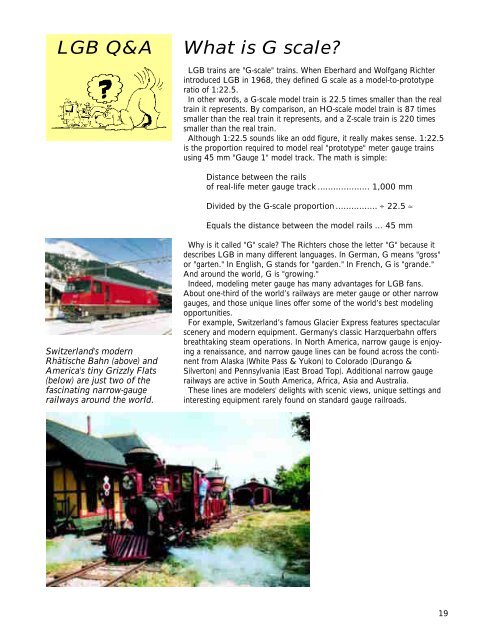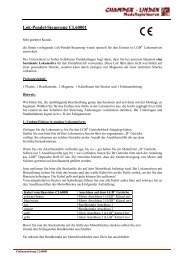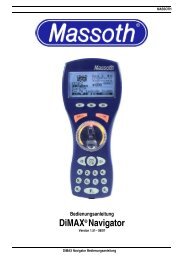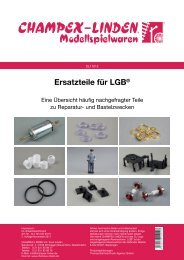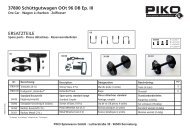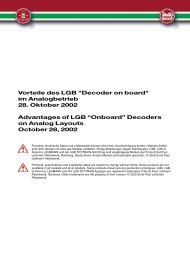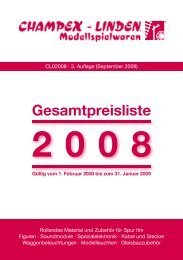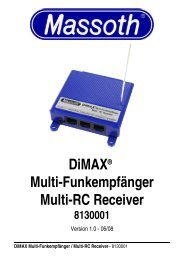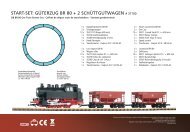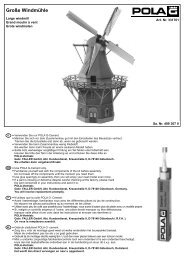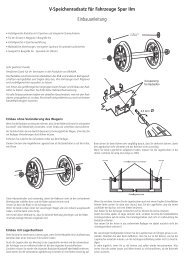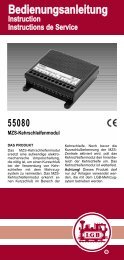00559 Interim PDF Edition - Champex-Linden
00559 Interim PDF Edition - Champex-Linden
00559 Interim PDF Edition - Champex-Linden
You also want an ePaper? Increase the reach of your titles
YUMPU automatically turns print PDFs into web optimized ePapers that Google loves.
LGB Q&A<br />
Switzerland's modern<br />
Rhätische Bahn (above) and<br />
America's tiny Grizzly Flats<br />
(below) are just two of the<br />
fascinating narrow-gauge<br />
railways around the world.<br />
What is G scale?<br />
LGB trains are "G-scale" trains. When Eberhard and Wolfgang Richter<br />
introduced LGB in 1968, they defined G scale as a model-to-prototype<br />
ratio of 1:22.5.<br />
In other words, a G-scale model train is 22.5 times smaller than the real<br />
train it represents. By comparison, an HO-scale model train is 87 times<br />
smaller than the real train it represents, and a Z-scale train is 220 times<br />
smaller than the real train.<br />
Although 1:22.5 sounds like an odd figure, it really makes sense. 1:22.5<br />
is the proportion required to model real "prototype" meter gauge trains<br />
using 45 mm "Gauge 1" model track. The math is simple:<br />
Distance between the rails<br />
of real-life meter gauge track .................... 1,000 mm<br />
Divided by the G-scale proportion ................ ÷ 22.5 ≈<br />
Equals the distance between the model rails ... 45 mm<br />
Why is it called "G" scale? The Richters chose the letter "G" because it<br />
describes LGB in many different languages. In German, G means "gross"<br />
or "garten." In English, G stands for "garden." In French, G is "grande."<br />
And around the world, G is "growing."<br />
Indeed, modeling meter gauge has many advantages for LGB fans.<br />
About one-third of the world’s railways are meter gauge or other narrow<br />
gauges, and those unique lines offer some of the world’s best modeling<br />
opportunities.<br />
For example, Switzerland’s famous Glacier Express features spectacular<br />
scenery and modern equipment. Germany's classic Harzquerbahn offers<br />
breathtaking steam operations. In North America, narrow gauge is enjoying<br />
a renaissance, and narrow gauge lines can be found across the continent<br />
from Alaska (White Pass & Yukon) to Colorado (Durango &<br />
Silverton) and Pennsylvania (East Broad Top). Additional narrow gauge<br />
railways are active in South America, Africa, Asia and Australia.<br />
These lines are modelers' delights with scenic views, unique settings and<br />
interesting equipment rarely found on standard gauge railroads.<br />
19


